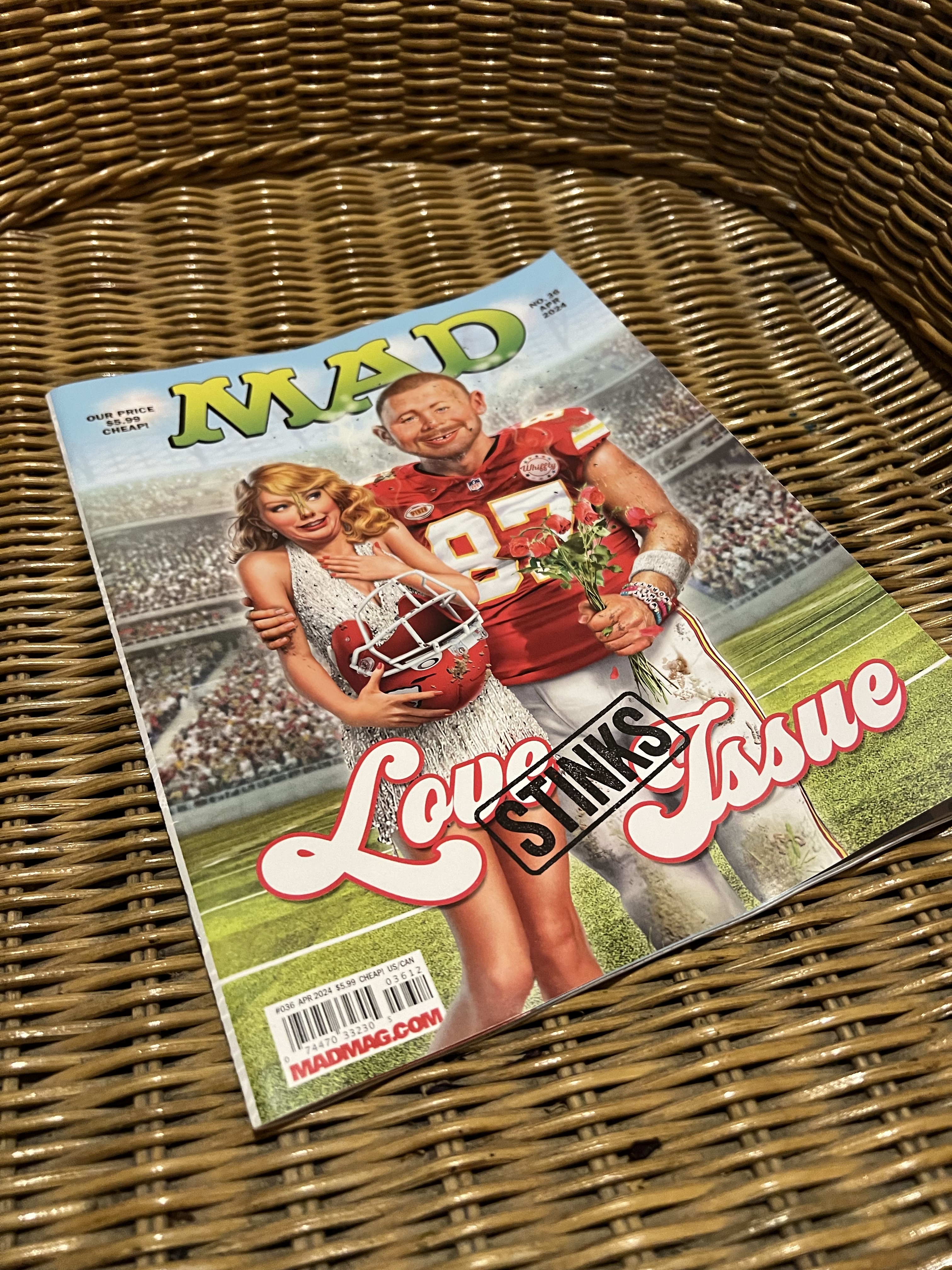Your cart is currently empty!
MAD Magazine: The Ultimate Satirical Playground






Introduction:
Step into the zany world of MAD Magazine, where nothing is sacred and everything is fair game for ridicule and parody. For decades, MAD has been the unrivaled champion of satire, skewering pop culture, politics, and society with razor-sharp wit and irreverent humor. From its iconic Spy vs. Spy series to its classic movie and TV parodies, MAD Magazine has left an indelible mark on the comedic landscape, inspiring laughter and controversy in equal measure.
Classic Parodies:
One of MAD Magazine’s most beloved features is its penchant for lampooning popular movies and TV series. With expert precision, MAD takes aim at Hollywood blockbusters and small-screen sensations, turning them on their heads with hilarious results. Whether it’s a scathing critique of a box office flop or a tongue-in-cheek take on a beloved sitcom, MAD’s parodies are always sharp, witty, and uproariously funny.
From “Star Blecch” to “The Groan Ranger,” MAD has reimagined countless cinematic and television classics through its unique lens of absurdity and satire. No genre is safe from MAD’s satirical wrath, as horror films, superhero epics, and romantic comedies all fall victim to its irreverent humor. With each parody, MAD holds up a funhouse mirror to popular culture, revealing the absurdity and folly that lurk beneath the surface.
Spy vs. Spy:
No discussion of MAD Magazine would be complete without mentioning its iconic “Spy vs. Spy” feature. Created by Cuban cartoonist Antonio Prohías in the early 1960s, “Spy vs. Spy” follows the never-ending conflict between two rival spies, one dressed in white and the other in black. Their battles are marked by elaborate traps, clever gadgets, and explosive gags, all rendered in Prohías’s signature minimalist style.
What sets “Spy vs. Spy” apart is its timeless appeal and universal humor. Despite the absence of dialogue, the strips speak volumes through their slapstick antics and clever visual gags. With each installment, readers are treated to a symphony of chaos and absurdity, as the two spies engage in a never-ending game of one-upmanship. Whether they’re blowing each other up with dynamite or outsmarting each other with cunning disguises, the spies’ antics never fail to entertain.
Absurdity and Gross Imagery:
In addition to its classic parodies and Spy vs. Spy hijinks, MAD Magazine is also known for its embrace of the absurd and the grotesque. From its early days as a comic book to its heyday as a magazine, MAD has never shied away from pushing the boundaries of good taste and decency. Whether it’s a gross-out gag involving bodily functions or a surrealistic riff on modern life, MAD revels in its role as the ultimate purveyor of the bizarre and the absurd.
One of MAD’s most enduring legacies is its ability to take the mundane and twist it into something surreal and grotesque. Whether it’s a comic strip comparing “What We Should Learn in School” with “What We Actually Learn,” or a grotesque illustration of a dysfunctional family dinner, MAD delights in subverting expectations and shocking its audience. In a world that often takes itself too seriously, MAD serves as a welcome reminder to laugh at the absurdity of life and to embrace the weirdness that surrounds us.
Conclusion:
In a landscape dominated by political correctness and sanitized humor, MAD Magazine stands as a defiant bastion of satire and irreverence. With its classic parodies, iconic Spy vs. Spy series, and penchant for the absurd, MAD continues to delight and provoke readers of all ages. As long as there are sacred cows to be slaughtered and taboos to be broken, MAD will be there, ready to skewer them with its trademark blend of wit, humor, and gross-out gags. Long live MAD Magazine, the ultimate satirical playground!